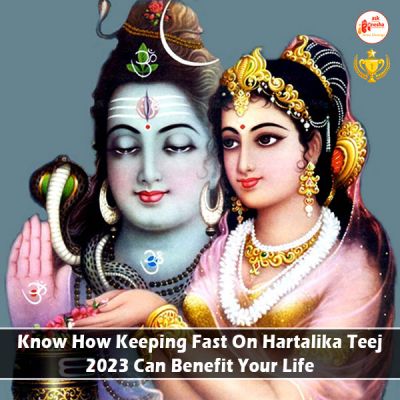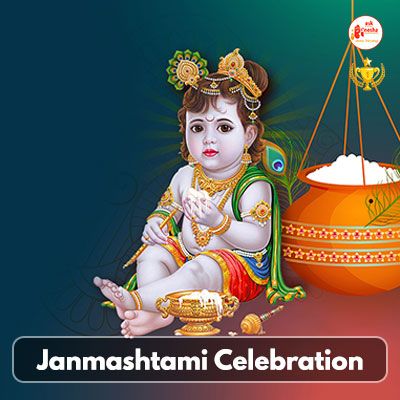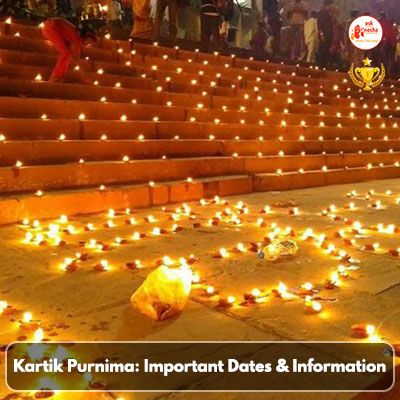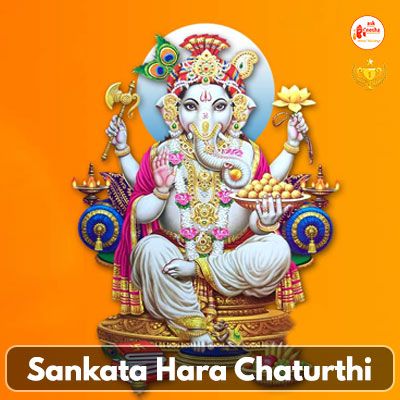Hartalika Teej is one of the Hindu festivals celebrated by married and unmarried women in various parts of India, especially in the states of Rajasthan, Uttar Pradesh, Bihar, and Madhya Pradesh. It falls on the third day of the first fortnight (Shukla Paksha) in the Hindu month of Bhadrapada, corresponding to the months of August or September.
The festival is dedicated to Goddess Parvati, the wife of Lord Shiva. According to Hindu mythology is of opinion that, Parvati was deeply in love with Shiva and wanted to marry Him. On Hartalika Teej, women observe a fast for at least 12 hours and perform various rituals to have the blessings of Parvati Ma for a happy and prosperous conjugal life or to obtain a suitable partner if unmarried.
Read More on Hartalika Teej: Praying for an Ideal Husband & Family
The term "Hartalika" has been derived from two words: "Harat," meaning "kidnapping," and "Aalika," meaning "female friend." According to legend, Parvati's friend took her to a forest against her father's will to keep aside a proposal from a demon named Tarakasura. Parvati thereafter performed intense penance for years to win Lord Shiva's attention to marry her. The festival is just to commemorate that event.
On the very day of the festive occasion, women wake up early at dawn, take a bath, and wearing new clothes gather in groups for prayers and singing songs dedicated to Goddess Parvati. They also make clay idols of the goddess and decorate it with flowers and jewelry.
The main feature of the day is that women observe a strict fast during the day and abstain from taking all kinds of foods and even water until they take part in the evening Puja. The fast comes to an end the moment they are ready to pray to the moon. Married women go for the total well-being and longevity of their respective husbands, while unmarried women pray for a suitable life partner.
The festival includes traditional dance and singing competitions, and various other cultural activities. Women dressed in their traditional attires decorate themselves with mehendi patterns on their hands.
How Hartalika Teej is Observed in India?
In India Hartalika Teej is primarily observed in states like Rajasthan, Uttar Pradesh, Bihar, and Madhya Pradesh. Now we are going cast a glance at the process how the festival is generally celebrated.
Women observe a day-long fast on the very day of the festive day. It is a Nirjala fast that means abstaining from taking a drop of water for the entire day.
Read More on Haritalika Teej
Women gather in groups to pray to Ma Parvati and offer rituals dedicated to her. Making clay idols or placing images of the goddess they go on decorating them with flowers and various jewelries. The Puja involves offering flowers, fruits, incense sticks, and other items to the idol or picture of the goddess.
Women listen to with rapt attention the vrat katha, the fasting story associated with Hartalika Teej. The story narrates how Ma Parvati's friend took her to a forest without any notice of her father. She did so to help Mohr not to get wedded with a demon. It highlights the devotion and penance of Parvati and her strict steadfastness to marry Lord Shiva who is always absorbed in meditation.
Women often enjoy riding on beautifully decorated jhulas (swings) as part of the celebrations. Traditional dances are performed, and folk songs and bhajans are sung to make the occasion packed with devotional flavor.
The fast is broken in the evening when the Puja is over having sighted the moon. Women pray to the moon, seek blessings for a happy married life or a suitable life partner. Thereafter they go on consuming a special meal prepared in traditional recipes.
Read More on Akshaya Tritiya - celebrations, rituals and history
In some regions, the moment the puja and moon worship are over; married women apply sindoor (vermilion) to the idols or pictures of Devi Ma and playfully smear it on each other. This is called sindoor khela, a symbol of marital bliss and sisterhood noticed almost in every festival of India.
Women receive gifts from their husbands and family members as a gesture of deep love and celebration. Sweets, clothes, jewelry, and various other things related to women folk are commonly exchanged.
Throughout the day, women celebrate the Teej day with music, dance, and cultural programs. They also remain engaged in conversations, sharing stories, and enjoying the festive atmosphere together. The festival is often regarded as an opportunity for women to strengthen the social bonds, seeking the blessings of Goddess Parvati, and praying for the well-being of their families and husbands.
Astrology and Hartalika Teej
In Hindu culture, it is noted almost everywhere that astrology plays a very crucial role in determining auspicious timings and dates for various religious or social events and ceremonies. Festivals like Hartalika Teej are no exception. Astrology is believed to influence different aspects of human life, including intimate relationships, all round prosperity, and total well-being.
Read More on Tritiya Shraddh: Rituals for Deceased Ancestors
Astrologers and priests consider the planetary positions and alignments to determine the most suitable time for performing Puja and observing rituals during Indian festivals. They go on scrutinizing the positions of celestial bodies, like the Sun, Moon, and other planets, to have a vigil in auspicious periods for initiating important activities.
For the Teej specifically, astrological considerations may include factors like the placement of the Moon, the alignment of various stars, and the influence of specific planetary configurations during the occasion. These factors are believed to have an impact on overall energy and outcome of the said festival.
Again astrological guidance may be sought by individuals during the occasion to gain proper insights into personal lives, relationships, and future prospects. Some people take the help of astrologers to understand the astrological significance of the festival and how it specifically relates to their lives.
Has Keeping Fast in Hartalika Teej any Health Benefits?
Keeping a fast either Nirjala or in other format during Hartalika Teej is primarily observed for religious and cultural reasons. It is believed that they may have no direct health benefits. However, fasting may have potential health effects for individuals who undertake it responsibly along with proper considerations. Here we are hinting at a few points.
Detoxification is the key factor. Fasting allows the digestive system to enjoy rest and detoxify. The body utilizes stored energy and breaks down various toxins stored in bodies. This can provide a brief but useful respite to the digestive organs.
Increased Mental Clarity helps to focus during fasting periods. With the absence of heavy meals, digestion-related sluggishness is absolutely minimized, allowing every individual to feel more alert. In this way the maidens who take in the very festival like Teej are rejuvenated and are engaged in various cultural activities round the day.
Self-Discipline and Mindfulness are the key factors while going for fasting in the Teej. Fasting cultivates self-discipline and mindfulness. Ladies during the festival become much aware of their eating habits and keep restraint. It promotes a sense of control over food consumption and instills healthier eating habits in the days to come.
Read More on Maa Uma Maha Anusthan
Weight Management is the chief factor of fasting rituals. Fasting contributes to temporary weight loss as the body goes on utilizing stored fat for more energy. However, it must be kept in mind that once keeping fast in a festival is not the crucial factor for any person. It is just for a mere few days or months. During a festival when the devotees go on fasting hey have he vivid idea in mind that they must not be engrossed n he thoughts of taking food and drinks rather they must keep utmost importance on the deity they are going to worship. Going fasting for a day is absolutely has no impact on a human body. It is important to note that the weight loss is usually temporary. It can be regained once normal eating patterns resume.
Some Special Features Associated with Hartalika Teej Fasting
There are some special features associated with the fasting in Hartalika festival. If a married woman keep fast once, she must have to go on every year.
The woman or unmarried girl who is going to observe he fast must keep it in mind that for 24 hours they should not have either any food or drink until they smear the idol or image of Ma Pavati with vermillion or sindoor at dawn when the proper Puja is over.
Not only fasting is sufficient. To attain the grace of the Devi, the lady must pray to the goddess, go on for aarti and pray for the longevity of the husband.
The devotees associated with Hartalika Teej may go for offering sweets to the deity brought from the market. There is no hard and fast rule. But it is recommended that fasting women should prepare foods with utmost devotion at home and offer them to the deities.
Food items may vary. They may range from halwa, puri, thekwa, kheer laddoo made from coconut and fresh fruits. In some places gulab jamun type sweets are also offered. But whatever the fasting devotee offers, she must take it into consideration that her offering must be devout and comes from he core of the heart. Only thereafter the utility of fasting will be given priority and observation of Hartalika Teej will be fructified.
























 Translate
Translate